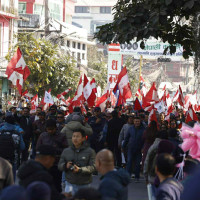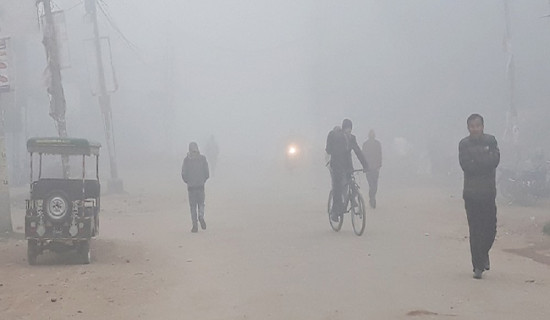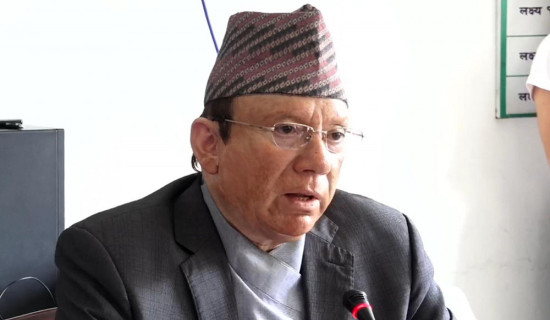- Wednesday, 14 January 2026
Radha: Fantasy around heritage, heritage within fantasy
Kathmandu, Dec. 24:Predominantly, stories crafted for young adults share certain thematic consistencies – a young protagonist reluctantly taking up responsibilities beyond their age; characters exploring their identities, questioning who they are and where they belong; parental figures, or a lack thereof, and their influence on the protagonist; and metaphorical presentation of real-world challenges.
As a young adult fantasy, Rishi Amatya’s debut novel ‘Radha’ also expectedly aligns itself with the genre’s motifs. But it still succeeds in delivering a fresh tale through the skilful weaving of the ordinary with the extraordinary, of life with legend, of history with story and of divinity with humanity. ‘Radha’ is unique in that it bases itself on the physical and metaphysical elements of Patan Durbar Square and uses the rich mythos of the Nepal Mandal to infuse new flavour into familiar thematic threads.
‘Radha,’ unsurprisingly, has a girl named Radha as the main character. A newly retired Kumari, she now desires an ordinary life away from the office of the living goddess. She wants to help her mother Gyani Maya around the house, play with her brother Dhiraj and have her uncle Pradip give her tours of Mangal Bazaar. But the catastrophic earthquake of April 25, 2015, which not only shatters the physical structures around her but also unravels the fabric of her reality, forces her to put her desire for normalcy on hold. This cataclysm becomes the backdrop of a tale of cosmic proportions, where personal and supernatural forces collide, and Radha is propelled into a quest of self-discovery and understanding of what it truly means to be a god.
One of its strengths is that ‘Radha’ seamlessly blends fact with fiction and heritage with mysticism. Readers who follow Radha’s adventures around Amatya’s imagined Patan Durbar Square get to learn of the origins and significance of some of the monuments at the real Patan Durbar Square. In that sense, ‘Radha’ tricks people
into learning history.
Another strength is that it does not box in its characters within specific ethnicities. The use of Nepal Bhasa and the Patan setting implies that Radha, Dhiraj, Pradip and others featured in the story are from the Newa community. But there is nothing beyond that to tie the personas to particular groups or lineages. The author does not give them last names. Their first names, too, are not overtly ethnic (Radha, Dhiraj, Pradip, Hari and Amogh are generic Nepali names).
Having said this, ‘Radha’ is rooted in Patan. The tale cannot stay the same if the location is changed. And this both enriches and limits it.
The care that Amatya takes in crafting Mangal Bazaar draws in readers and immerses them in the tapestry of its temples, caves, courtyards and, of course, the Kartik Dabu. But this requires the readers to have at least a passing familiarity with the Patan Durbar Square. This reporter asked three of his friends from outside the Kathmandu Valley to read the book and they said that they found it disorienting. They could not grasp where the Mani Gufa or the Bhimsen Temple was. The sequences in the Mul Chowk were not as impactful as they could have been because they could not place where the Chowk was. Perhaps a few paragraphs or a chapter to set the scene would
have been useful.
Divided into seven chapters – from the Nepali months of Baisakh to Kartik – it is an easy read. Although the book jumps from one storyline to another, it does so without confusing the reader. The language is simple and does not require the use of a dictionary. The meanings of non-English words have been sufficiently clarified. The editor perhaps deserves more credit for this
than the writer.
In conclusion, although not without flaws, Amatya's exploration of familial bonds, self-discovery, and the cosmic forces that shape our destinies make ‘Radha’ a captivating and relatable read. Amatya, who is a heritage interpreter, plays to his strengths and interprets Patan’s lore into an engaging novel.




-square-thumb.jpg)








